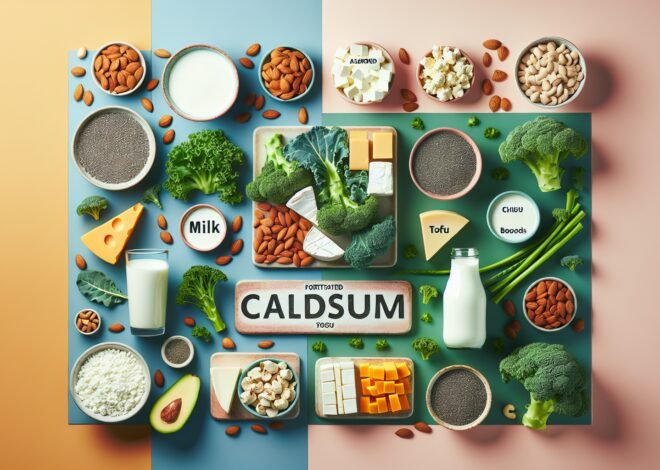
Best Low-Fat Dairy Products to Include in a Healthy Diet
Low-fat dairy products are a staple in numerous healthy diets, offering essential nutrients with less saturated fat. Did you know that choosing low-fat options can help maintain heart health without compromising on calcium and Vitamin D intake? This post will explore the best low-fat dairy options such as skim milk, low-fat yogurt, and reduced-fat cheese, all of which play a vital role in a balanced diet. You’ll learn about their nutritional benefits, ways to incorporate them into meals, and tips for selecting quality products. Dive in to discover how these options can enhance your health while satisfying your palate.
Health Benefits of Low-Fat Dairy Products
Low-fat dairy products offer a multitude of health benefits, making them a popular choice for those seeking a nutritious lifestyle. They provide essential nutrients without the added fat content found in full-fat versions. Understanding these benefits can help you make informed choices for your diet.
Nutritional Value of Low-Fat Dairy
Low-fat dairy products pack a significant nutritional punch. They are rich in calcium, which is crucial for maintaining strong bones and teeth. Furthermore, they provide essential vitamins such as A and D, supporting immune function and skin health. Compared to their full-fat counterparts, low-fat options have fewer calories, making them ideal for those looking to manage their weight.
Including low-fat dairy in your diet ensures you receive a healthy dose of protein, vital for muscle repair and growth. The reduced fat content doesn’t compromise nutritional value, making these options a wise choice for maintaining a balanced diet. Additionally, they often contain probiotics, which are beneficial for gut health, aiding digestion and enhancing nutrient absorption.
Low-fat dairy can be a source of potassium, which is important for maintaining healthy blood pressure levels. With lower saturated fat content, these products help reduce the risk of cardiovascular diseases. Thus, choosing low-fat dairy can contribute significantly to overall health and well-being.
Low-Fat Dairy’s Role in Weight Management
Incorporating low-fat dairy into your diet can play a pivotal role in weight management. They offer a satisfying way to increase protein intake without the extra calories and fat found in full-fat versions. This can help in creating a calorie deficit, which is essential for weight loss.
Studies have shown that diets including low-fat dairy products can aid in reducing body fat. The high protein content helps in building lean muscle mass, which in turn boosts metabolism. As a result, your body burns more calories, even at rest, supporting weight management efforts.
Low-fat dairy products also provide a feeling of fullness, reducing the likelihood of overeating. By including foods like low-fat yogurt or skim milk in your meals, you can stay satisfied longer, which aids in controlling calorie intake. These benefits make low-fat dairy a smart addition to any weight management plan.
Cardiovascular Health and Low-Fat Dairy Consumption
Low-fat dairy products positively impact cardiovascular health. They contain reduced levels of saturated fats, which are known to contribute to heart disease. Choosing low-fat options helps lower cholesterol levels, reducing the risk of cardiovascular complications.
Calcium and potassium in low-fat dairy play a role in regulating blood pressure, further supporting heart health. Additionally, these products often contain omega-3 fatty acids, which are heart-friendly and help in reducing inflammation.
Incorporating low-fat dairy into your diet provides these cardiovascular benefits without sacrificing essential nutrients. By opting for low-fat versions, you can enjoy dairy’s nutritional benefits while protecting your heart health.
Top Low-Fat Dairy Products to Include in Your Diet
Incorporating low-fat dairy into your diet can be both delicious and beneficial. Here we explore some of the best low-fat dairy options that are easy to include in daily meals. These products not only enhance the taste of your dishes but also boost their nutritional value.
Benefits of Skim Milk and Low-Fat Milk
Skim milk and low-fat milk are excellent choices for those seeking to reduce fat intake without compromising on taste. These milk variants offer all the essential nutrients like calcium, vitamin D, and protein, minus the extra calories from fat. This makes them ideal for those watching their weight or looking to reduce overall fat consumption.
Drinking skim milk can be particularly beneficial for those with lactose intolerance, as it often contains less lactose than whole milk. Additionally, it’s versatile enough to be used in various recipes, from smoothies to baking, without altering flavor.
Switching to low-fat milk can also support cardiovascular health by lowering the intake of saturated fats. With similar taste profiles to whole milk, they make the transition to healthier choices seamless and satisfying.
Low-Fat Yogurt: Varieties and Health Perks
Low-fat yogurt comes in numerous varieties, offering a range of flavors and textures to suit different preferences. Greek yogurt, for example, is thick and creamy, providing more protein than regular yogurt, making it ideal for muscle repair and growth.
These yogurts often contain active probiotics, which support digestive health and boost immunity. Choosing low-fat versions ensures you gain these benefits without the extra calories or fat associated with full-fat yogurts.
Whether you enjoy it plain, flavored, or in smoothies, low-fat yogurt can enhance your diet with its rich nutrient profile. It’s an adaptable food that can be enjoyed on its own or as part of a meal, offering taste and health benefits.
Low-Fat Cheese Options for a Balanced Diet
Low-fat cheese provides the creamy texture and rich flavor of regular cheese, minus the high fat content. Options like part-skim mozzarella, reduced-fat cheddar, and cottage cheese can be included in meals without adding excess calories.
These cheeses are rich in protein and calcium, supporting bone health and muscle function. They are excellent for snacking, cooking, or adding to salads and sandwiches, offering versatility in meal preparation.
Incorporating low-fat cheese into your diet allows for the enjoyment of cheese’s delicious taste while maintaining a balanced diet. These options help satisfy cravings without compromising health goals.
Tips for Incorporating Low-Fat Dairy into Meals
Incorporating low-fat dairy into meals can elevate both their nutritional profile and taste. This section provides practical tips on how to seamlessly integrate low-fat dairy into everyday meals. From breakfast to dinner, these tips ensure you enjoy the benefits of low-fat dairy without sacrificing flavor.
Creating Healthy Smoothies with Low-Fat Dairy
Smoothies provide an excellent way to include low-fat dairy in your diet. Using skim milk or low-fat yogurt as a base can create a creamy texture without the added calories of full-fat options. Add fruits like bananas, berries, or spinach for a nutrient-rich blend.
To boost protein intake, add a scoop of low-fat cottage cheese or protein powder. This makes the smoothie more filling, ideal for post-workout recovery or as a meal replacement.
Experiment with flavors by incorporating spices like cinnamon or vanilla extract. These additions enhance taste without adding sugar, making your smoothies both delicious and healthy.
Cooking Recipes Using Low-Fat Dairy Alternatives
Low-fat dairy alternatives are perfect for cooking, offering the same rich flavors with fewer calories. Use skim milk in soups and sauces to achieve a creamy consistency. Low-fat cheese can be melted over pizzas or mixed into casseroles for a delightful taste.
In baking, substitute full-fat cream with low-fat yogurt or milk to cut down on fat content without affecting texture. This swap works well in pancakes, muffins, and cakes, maintaining moisture and flavor.
Incorporating these alternatives in recipes allows for a healthier diet while still enjoying your favorite dishes. They provide an easy way to reduce fat content without compromising on taste.
Snack Ideas Featuring Low-Fat Dairy Products
Low-fat dairy products offer a range of snack options that are both satisfying and nutritious. Enjoy a bowl of low-fat yogurt with granola and fresh fruits for a refreshing and filling snack. Alternatively, try cottage cheese with sliced peaches or berries for a protein-packed treat.
Low-fat cheese sticks or slices make convenient snacks, providing a good source of calcium and protein to keep energy levels stable throughout the day.
Including these snacks in your daily routine ensures you receive necessary nutrients while supporting weight management. They are quick to prepare and easy to carry, making them ideal for busy lifestyles.
Conclusion
Low-fat dairy products are created by reducing the fat content in dairy products such as milk, yogurt, and cheese. They offer a lower-calorie alternative while retaining essential nutrients like calcium and protein. These products are popular among those seeking to manage weight or reduce saturated fat intake. Consuming low-fat dairy can be part of a balanced diet and may help in reducing the risk of certain health conditions. Some studies suggest benefits in cardiovascular health when low-fat dairy is included in the diet.
FAQ
What are the health benefits of consuming low-fat dairy products?
Low-fat dairy products offer an excellent source of calcium, vitamin D, and protein while containing fewer calories and less saturated fat than full-fat options. They support bone health and may aid in weight management. Including them in your diet can contribute to overall heart health.
How do low-fat dairy products differ from full-fat options?
Low-fat dairy products have reduced fat content, typically containing 1% to 2% fat, while full-fat versions contain around 3.25% fat. This reduction results in lower calorie content without sacrificing essential nutrients like calcium and protein.
Are low-fat dairy products suitable for weight loss diets?
Yes, low-fat dairy products are often recommended in weight loss diets due to their lower calorie and fat content. They help you meet nutritional needs without adding too many extra calories, making them a practical choice for those looking to lose weight.
What nutrients can be found in low-fat dairy products?
Low-fat dairy products are rich in calcium, vitamin D, phosphorus, and protein. These nutrients are vital for bone health, muscle function, and overall bodily functions. They also provide potassium, which supports heart health.
How can low-fat dairy products be incorporated into daily meals?
Incorporate low-fat dairy into breakfast with yogurt or milk, mix cheese into salads or casseroles, or use milk in smoothies. They make a great addition to healthy snacks and can be used in cooking and baking to enhance taste without adding excessive fat.
Is there a difference in taste between low-fat and full-fat dairy products?
Some people notice a slight difference in taste and texture between low-fat and full-fat dairy products. Low-fat versions may taste lighter and less creamy, but many find the taste enjoyable, especially when used in recipes or paired with other foods.











